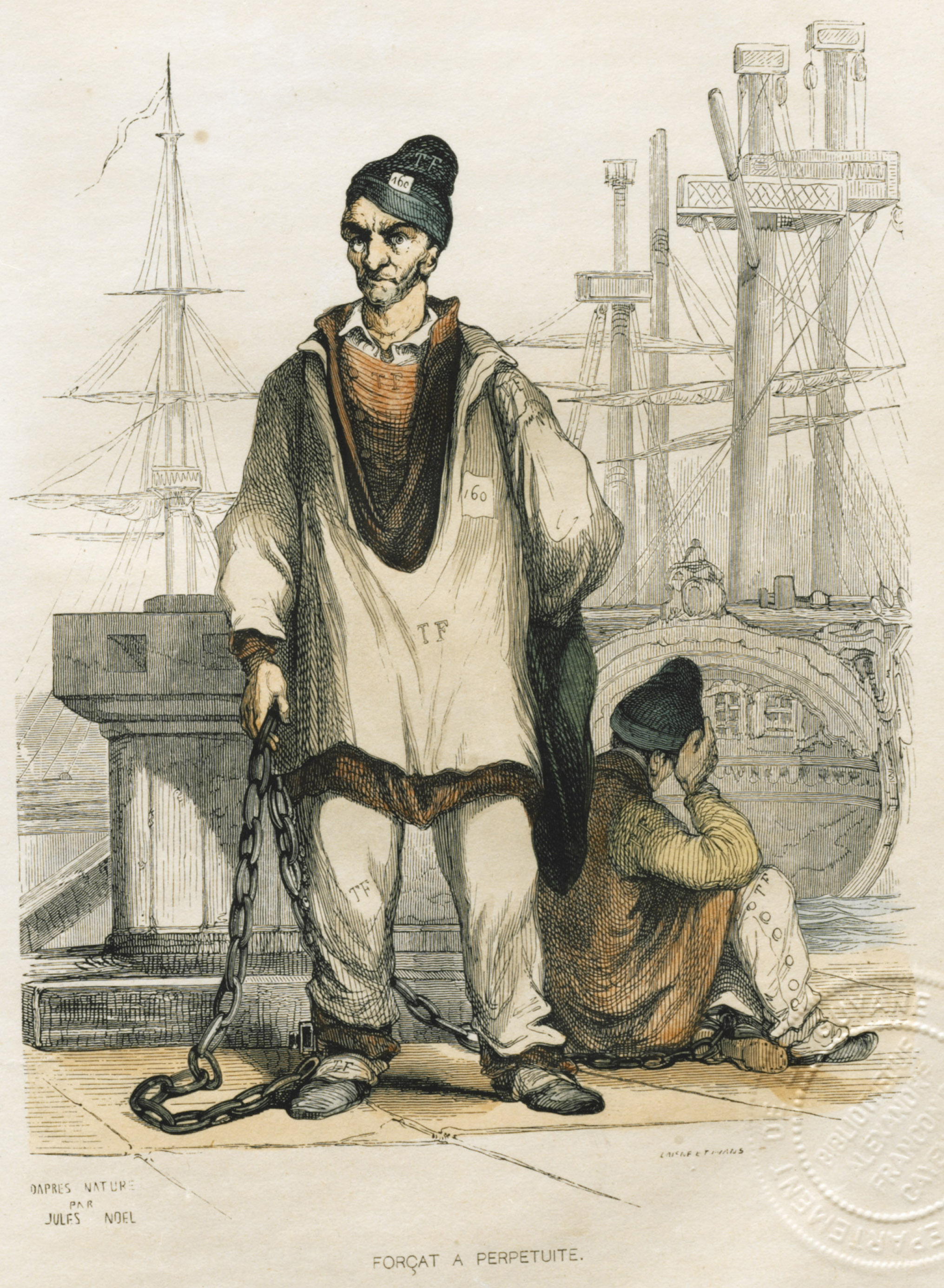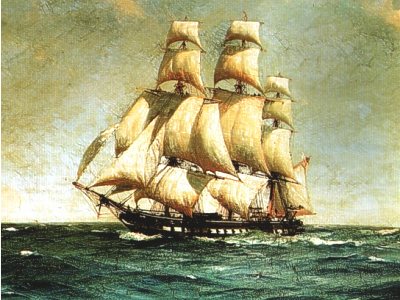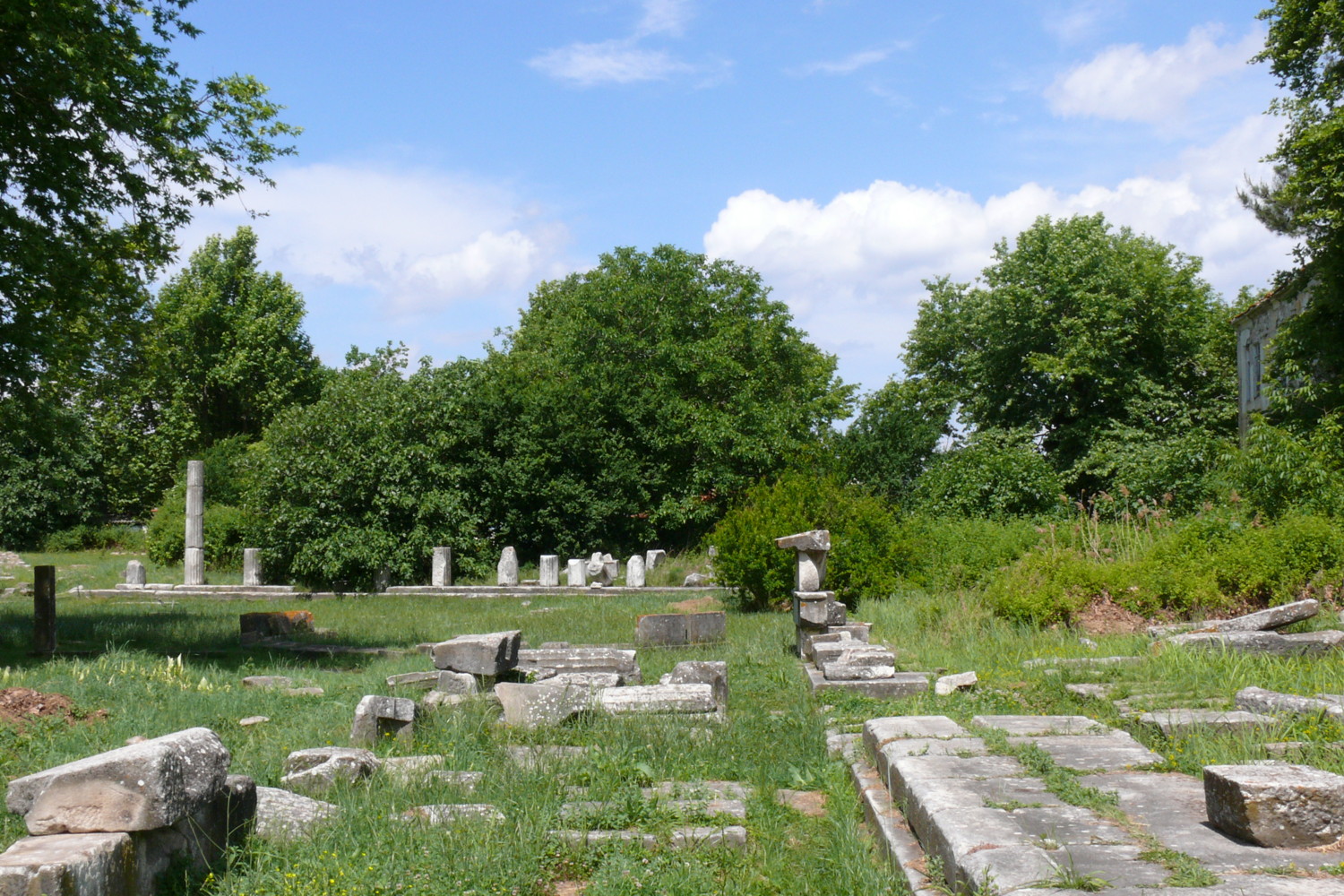|
Jean Boniface Textoris
Jean Boniface Textoris was a military surgeon, chief doctor of the French Navy, born on 24 February 1773 in Toulon and died on 3 September 1828 in Néoules in the Var. Joining the Navy in 1787, at the age of 14, he rose through the ranks of Navy surgeon, operating during 16 years on most of the major ships of the Ancien Régime and of the French Revolutionary Wars. Received doctor at the Montpellier Faculty of Medicine in 1803, he was appointed Chief Medical Officer of the squadron shortly after the advent of the First Empire under the command of Admiral de Latouche-Tréville, then on his death, under the command of Admiral de Villeneuve on the '' Bucentaure''. In this capacity, he took part in the battle of Trafalgar (21 October 1805) where he was recognised for his devotion to wounded sailors. For a few years, he still embarked on hospital ships, but, in 1811, weakened by his health, he applied for a position as an instructor and was appointed to the Army training ship, th ... [...More Info...] [...Related Items...] OR: [Wikipedia] [Google] [Baidu] |
Surgeon
In modern medicine, a surgeon is a medical professional who performs surgery. Although there are different traditions in different times and places, a modern surgeon usually is also a licensed physician or received the same medical training as physicians before specializing in surgery. There are also surgeons in podiatry, dentistry, and veterinary medicine. It is estimated that surgeons perform over 300 million surgical procedures globally each year. History The first person to document a surgery was the 6th century BC Indian physician-surgeon, Sushruta. He specialized in cosmetic plastic surgery and even documented an open rhinoplasty procedure.Ira D. Papel, John Frodel, ''Facial Plastic and Reconstructive Surgery'' His magnum opus ''Suśruta-saṃhitā'' is one of the most important surviving ancient treatises on medicine and is considered a foundational text of both Ayurveda and surgery. The treatise addresses all aspects of general medicine, but the translator G. D. Si ... [...More Info...] [...Related Items...] OR: [Wikipedia] [Google] [Baidu] |
Bagne Of Toulon
The Bagne of Toulon was the notorious prison in Toulon, France, made famous as the place of imprisonment of the fictional Jean Valjean, the hero of Victor Hugo's novel ''Les Misérables''. It was opened in 1748 and closed in 1873. Origins: the galleys The bagne was created by an ordinance of King Louis XV on September 27, 1748 to house the convicts who had previously been sentenced to row the galleys of the French Mediterranean fleet. The decree stated, in article 11, "All the galleys in the port will be disarmed, and the ''chiourmes'' (the ancient term for the convict galley rowers) will be kept on land in the ''bagnes'', guarded halls, or other places which will be designated for their confinement." The name 'bagne' came from the Italian word ' (giving ''bagnio'' in English), or "bath", the name of a prison in Rome which had formerly been a Roman bath. Other authors point to a prison in Livorno. Since the 15th century, French prisoners had been sentenced to serve on th ... [...More Info...] [...Related Items...] OR: [Wikipedia] [Google] [Baidu] |
Fall Of The Republic Of Venice
The fall of the Republic of Venice was a series of events that culminated on 12 May 1797 in the dissolution and dismemberment of the Republic of Venice at the hands of Napoleon Bonaparte and Habsburg Austria. In 1796, the young general Napoleon had been sent by the newly-formed French Republic to confront Austria, as part of the French Revolutionary Wars. He chose to go through Venice, which was officially neutral. Reluctantly, the Venetians allowed the formidable French army to enter their country so that it might confront Austria. However, the French covertly began supporting Jacobin revolutionaries within Venice, and the Venetian senate began quietly preparing for war. The Venetian armed forces were depleted and hardly a match for the battle-hardened French or even a local uprising. After the capture of Mantua on 2 February 1797, the French dropped any pretext and overtly called for revolution among the territories of Venice. By 13 March, there was open revolt, with Bresci ... [...More Info...] [...Related Items...] OR: [Wikipedia] [Google] [Baidu] |
French Ship Jemmapes (1794)
''Jemmapes'' was a 74-gun ship of the line of the French Navy. Laid down as ''Alexandre'', she was renamed ''Jemmapes'' on 7 January 1793 in honour of the Battle of Jemappes. She took part in the Atlantic campaign of May 1794 and ultimately in the Glorious First of June. She was attacked and totally dismasted by , with the loss of 60, including her captain, and 55 wounded. She took part in the expedition to Saint-Domingue under Julien Cosmao. She was part of Zacharie Allemand's "invisible squadron", under Captain Jean-Nicolas Petit. She fought at the Battle of the Basque Roads in 1809. She was used as a hulk in Rochefort, Charente-Maritime Rochefort ( oc, Ròchafòrt), unofficially Rochefort-sur-Mer (; oc, Ròchafòrt de Mar, link=no) for disambiguation, is a city and communes of France, commune in Southwestern France, a port on the Charente (river), Charente estuary. It is a Subpr ... from 1830, and was later broken up. Notes, citations, and references Notes Citation ... [...More Info...] [...Related Items...] OR: [Wikipedia] [Google] [Baidu] |
HMS Berwick (1775)
HMS ''Berwick'' was a 74-gun ''Elizabeth''-class third rate of the Royal Navy, launched at Portsmouth Dockyard on 18 April 1775, to a design by Sir Thomas Slade. She fought the French at the Battle of Ushant (1778) and the Dutch at the Battle of Dogger Bank (1781). The French captured her in the action of 8 March 1795 during the French Revolutionary Wars and she served with them with some success then and at the start of the Napoleonic Wars until the British recaptured her at the Battle of Trafalgar. ''Berwick'' sank shortly thereafter in a storm. Royal Navy service As one of the newest ships of the line, she was commissioned in December 1777. On the entry of France into the American War of Independence in 1778 ''Berwick'' joined the Channel Fleet. In July, she took part in the Battle of Ushant under the command of Captain the Hon. Keith Stewart. She served with the Channel Fleet throughout 1779. In 1780 she was sent out to the West Indies as part of a squadron under Commodo ... [...More Info...] [...Related Items...] OR: [Wikipedia] [Google] [Baidu] |
French Frigate Iris (1781)
The French frigate ''Iris'' was a ''Magicienne''-class frigate, one of seven, launched at Toulon in 1781 for the French Navy The French Navy (french: Marine nationale, lit=National Navy), informally , is the maritime arm of the French Armed Forces and one of the five military service branches of France. It is among the largest and most powerful naval forces in t .... Note: Between 1781 and 1784, there were two French frigates ''Iris'', this newly launched frigate, and the former USS ''Hancock'', which the British had captured in 1781 in the American theatre and renamed ''Iris'', and which the French had captured in 1781 and sold in 1784. The British captured the new ''Iris'' at Toulon on 28 August 1793, and burned her on their evacuation of the city in December. Fate When the Royalist French surrendered Toulon to Lord Hood in 1793, they found ''Iris'' dismantled and being used as a powder hulk. As the republicans advanced on the town, the Anglo-Spanish forces evacuated ... [...More Info...] [...Related Items...] OR: [Wikipedia] [Google] [Baidu] |
French Frigate Sensible (1787)
''Sensible'' was a 32-gun ''Magicienne''-class frigate of the French Navy. The Royal Navy captured her in 1798 off Malta and took into service as HMS ''Sensible''. She was lost in a grounding off Ceylon in 1802. French Navy service From November 1789, she served at Martinique under ''captaine de vaisseau'' Durand de Braye (or Durand d'Ubraye). In September 1790, she ferried Joséphine de Beauharnais and her daughter Hortense from Martinique to Toulon. In 1792, she took part in operations against Sardinia. In 1793, she was equipped as a bomb ship. On 9 December 1795, ''Sensible'' was part of Gantaume's squadron. ''Sensible'', along with the corvettes ''Sardine'' and ''Rossignol'', captured the 28-gun in the neutral port of Smyrna. The French warships entered the harbour in disregard of its neutrality and forced ''Nemesis'' to surrender. Murray Maxwell (then a midshipman) was taken prisoner on this occasion. Under ''lieutenant de vaisseau'' (later ''capitaine de frégate'' ... [...More Info...] [...Related Items...] OR: [Wikipedia] [Google] [Baidu] |
French Corvette Brune (1781)
''Brune'' was a ''Coquette'' class 20-gun corvette of the French Navy, launched in 1781 and captured in 1799 at the siege of Corfu, which saw a joint Russian and Turkish fleet capture Corfu from an occupying French force. Career On 15 November 1794, ''Minerve'', in company with ''Alceste'' and ''Brune'', under Ensign Deniéport sailed for a diplomatic mission to Tunis before returning to Toulon on 29 December.Fonds Marine, p.81 ''Brune'' was present at the action of 8 March 1795, and near the subsequent battle of Hyères Islands: in mid-July, ''Brune'' and the frigate ''Vestale'', under Commander Delorme, escorted a 25-ship wheat convoy from Genoa to France, when three enemy frigates gave chase; ''Brune'', which was a very bad sailor, had to take refugee at La Spezia, while ''Vestale'' managed to keep the frigates at bay and defend the convoy. After Deniéport was promoted to Lieutenant and Commander, she continued to escort convoys in the Adriatic Sea. On 26 March 1797, ... [...More Info...] [...Related Items...] OR: [Wikipedia] [Google] [Baidu] |
Thasos
Thasos or Thassos ( el, Θάσος, ''Thásos'') is a Greek island in the North Aegean Sea. It is the northernmost major Greek island, and 12th largest by area. The island has an area of and a population of about 13,000. It forms a separate regional unit within the East Macedonia and Thrace region. Before the local administration reform of 2011, it was part of the Kavala Prefecture. The largest town and the capital is Thasos, officially known as ''Limenas Thasou'', "Port of Thasos", situated at the northern side. It is connected with the mainland by regular ferry lines between Keramoti and Thassos town, and between the regional centre of Kavala and Skala Prinou. Thasos's economy relies on timber from its forests, marble quarries, olive oil, and honey. Tourism has also become important since the 1960s, although not to the level of other Greek islands. History Mythology Staphylus ( grc, Στάφυλος), the beloved son of god Dionysus, lived in Thasos. Prehistory Lying clo ... [...More Info...] [...Related Items...] OR: [Wikipedia] [Google] [Baidu] |
Eastern Mediterranean
Eastern Mediterranean is a loose definition of the eastern approximate half, or third, of the Mediterranean Sea, often defined as the countries around the Levantine Sea. It typically embraces all of that sea's coastal zones, referring to communities connected with the sea and land greatly climatically influenced. It includes the southern half of Turkey's main region Anatolia, its smaller Hatay Province, the island of Cyprus, the Greek Dodecanese islands, and the countries of Egypt, Israel, Jordan, Palestine, Syria and Lebanon. Its broadest uses can embrace the Libyan Sea thus Libya; the Aegean Sea thus European Turkey (East Thrace), the mainland and islands of Greece; and a central part of the Mediterranean, the Ionian Sea, thus southern Albania in Southeast Europe reaching, west, to Italy's farthest south-eastern coasts. Jordan is climatically, and economically part of the region. Regions The eastern Mediterranean region is commonly interpreted in two ways: *The Levant, inc ... [...More Info...] [...Related Items...] OR: [Wikipedia] [Google] [Baidu] |
HMS St Fiorenzo (1794)
''Minerve'' was a 40-gun frigate of the French Navy, lead ship of her class. She operated in the Mediterranean during the French Revolutionary Wars. Her crew scuttled her at Saint-Florent to avoid capture when the British invaded Corsica in 1794, but the British managed to raise her and recommissioned her in the Royal Navy as the 38-gun fifth rate HMS ''St Fiorenzo'' (also ''San Fiorenzo''). She went on to serve under a number of the most distinguished naval commanders of her age, in theatres ranging from the English Channel to the East Indies. During this time she was active against enemy privateers, and on several occasions she engaged ships larger than herself, being rewarded with victory on each occasion. She captured the 40-gun and the 22-gun in 1797, the 36-gun in 1805, and the 40-gun in 1808. (These actions would earn the crew members involved clasps to the Naval General Service Medal.) After she became too old for frigate duties, the Admiralty had her converted for ... [...More Info...] [...Related Items...] OR: [Wikipedia] [Google] [Baidu] |




